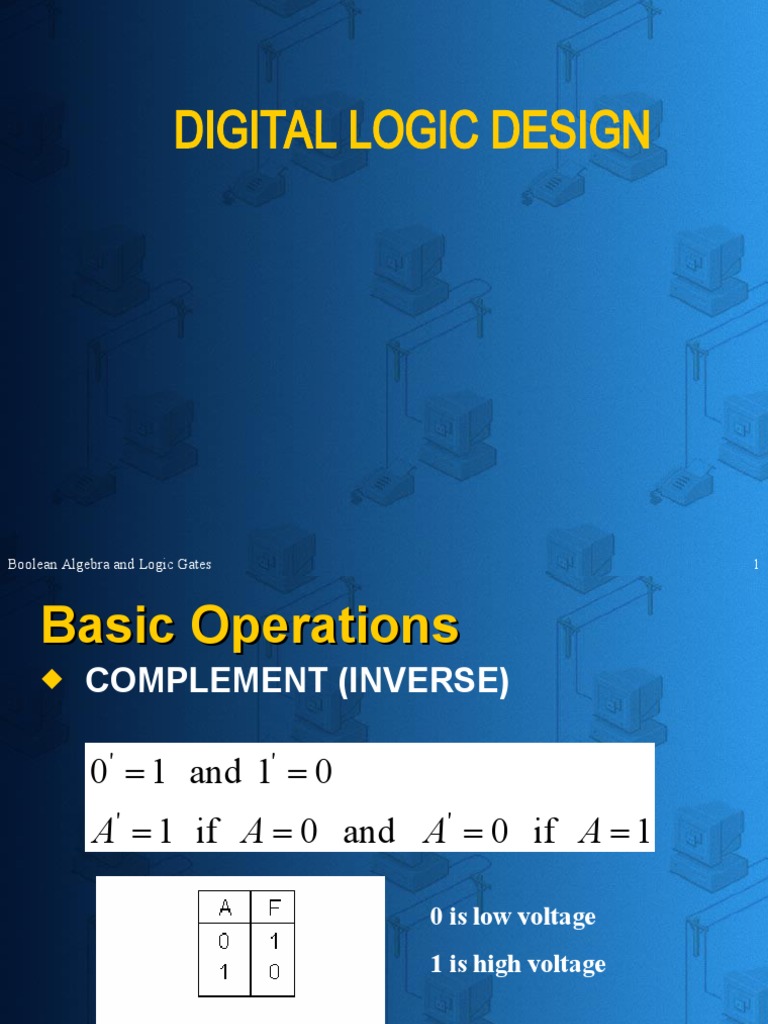The world of digital electronics is an intricate tapestry woven from the threads of mathematics and logic. At its core, logic gates serve as the fundamental building blocks of digital circuits, enabling the manipulation of binary data. These gates, encapsulated in tantalizing packages of logic, do not merely perform operations but also embody a mathematical language that describes their functionality. This article explores the multifaceted relationship between logic gates and mathematics, elucidating how this connection underpins the modern electronic landscape.
To commence, one can draw a parallel between logic gates and the age-old art of crafting a symphony. Just as a symphony relies on the precise arrangement of notes to elicit emotion, logic gates utilize mathematical operations to process information. The enigmatic allure of binary logic transforms seemingly mundane inputs into profound outputs, akin to the transmutation of silenced air into melodious sounds. Each gate, like an adept musician, takes the binary values of 0 and 1—representing false and true, respectively—and orchestrates them into combinations that yield the desired results.
At the heart of logic gates lies Boolean algebra, a specialized branch of mathematics that provides the framework for describing logical operations. The pioneering work of George Boole in the mid-19th century laid the foundation for a mathematical system where symbols represent logical variables. In this realm, the simplicity of operations such as AND, OR, and NOT can be represented by meticulously crafted equations. For instance, the AND gate, which outputs true only when all its inputs are true, can be expressed as A · B = C. Here, the multiplication symbol signifies the conjunction of A and B, yielding C as the resultant output.
Similarly, the OR gate, offering a different perspective on inputs, can be articulated as A + B = C, where the addition symbol encapsulates the inclusive nature of the operation. Such clarity in expression exemplifies how mathematics crystallizes complex interactions into elegant symbols. The transition from mundane electronic signals to mathematically expressible operations underscores the unique interplay between logic gates and their corresponding algebra.
Moreover, the efficacy of logic gates extends beyond mere computations; they serve as paramount components in the formulation of truth tables and logical expressions. A truth table is a methodical compilation that outlines the relationship between inputs and their consequential outputs across all possible scenarios. Utilizing Boolean algebra, one can deduce the behavior of a circuit, illustrating the mathematical precision inherent in the design process. This methodological approach reminds one of the meticulous arrangement of a chessboard, where each move is dictated by a comprehensive understanding of potential outcomes.
In a broader context, the role of logic gates in computer science, particularly in programming and algorithm design, further amplifies their link to mathematics. Various algorithms can be delineated through the lens of logical expressions, correlating directly to the functionality of logic gates in hardware. The marriage of abstract mathematics and practical application leads to the realization that algorithms, much like the mathematical structures they are built upon, are governed by principles of logic. For instance, the algorithms for sorting and searching, common tasks in computing, heavily rely on logical operations that can be traced back to the conceptual roots of logic gates.
Furthermore, the synergy between logic gates and mathematics extends to the realm of binary systems that underpin computer architecture. The use of binary (base-2) notation is a testimony to the mathematical prowess that elevates logic gates to their paramount status. Each bit, represented as either 0 or 1, aligns perfectly with the binary operations performed by logic gates. The ability to translate decimal values into binary forms serves as an illustrative example of how mathematics facilitates digital computations. This transformation allows for nuanced processing and storage of information, asserting the ideation that mathematics is not merely a tool, but rather the essence of digital logic.
One must also recognize the significance of combinational and sequential logic circuits in showcasing the mathematical nature of logic gates. Combinational logic, wherein outputs depend solely on the current inputs, employs circuits composed of numerous interconnected gates. The ability to analyze and optimize these circuits is implemented through mathematical techniques such as Karnaugh maps, which provide a visual representation for minimizing logical expressions. These techniques serve as indispensable tools in circuit design, revealing the profound relationship between logical simplification and mathematical reasoning.
On the other hand, sequential logic circuits, which incorporate memory elements, introduce an additional layer of complexity. In these circuits, the history of inputs influences the outputs, involving concepts such as timing and state transitions. The vast intricacies of these circuits are modeled using state diagrams and finite state machines, demonstrating that the solid grounding of mathematics is indispensable for managing dynamic systems. Here, the elegance of mathematics unfolds, illuminating the path toward understanding feedback loops and temporal dependencies.
In recapitulation, logic gates epitomize the symbiotic relationship between mathematics and electrical engineering. By distilling complex operations into mathematically manageable expressions, logic gates serve not only as functional components of digital devices but also as a testament to the ingenuity of human thought. Through the lenses of Boolean algebra, truth tables, algorithm design, and circuit topology, one finds that the poetic language of mathematics undergirds the very foundation of digital logic. As we traverse deeper into the digital age, the allure and necessity of this mathematical connection only multiply, promising further revelations on the horizon of technology.












